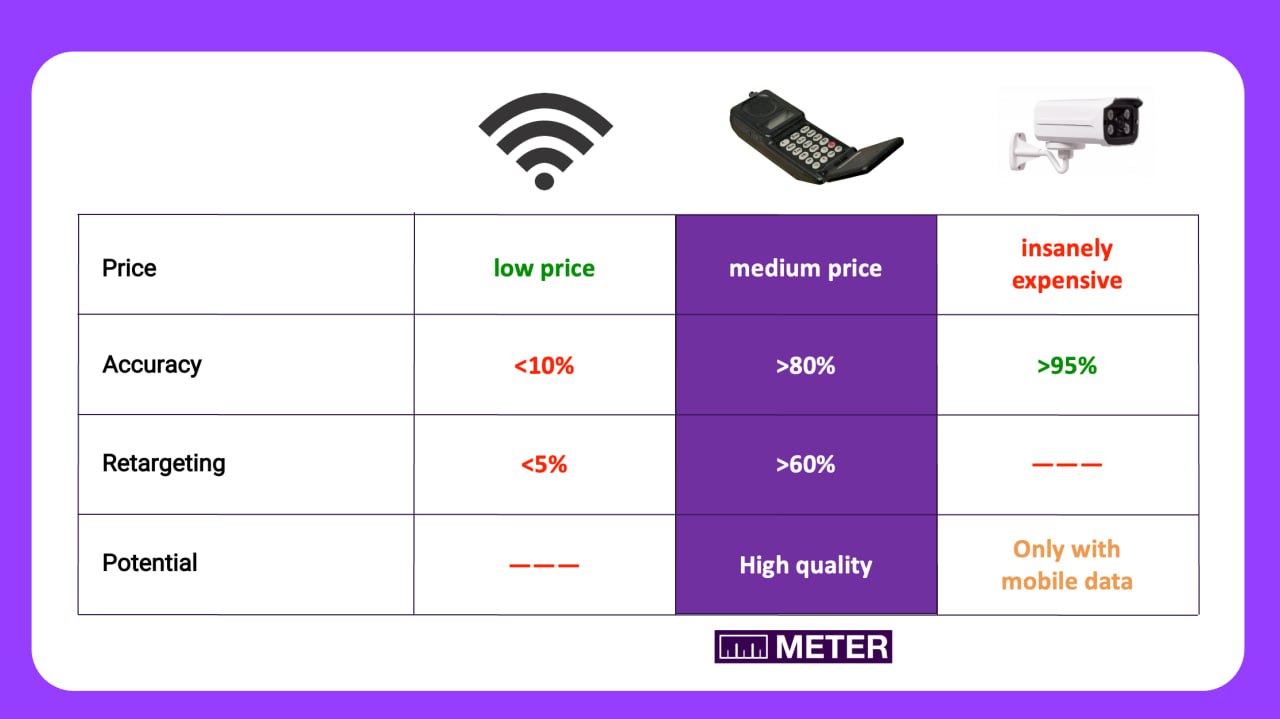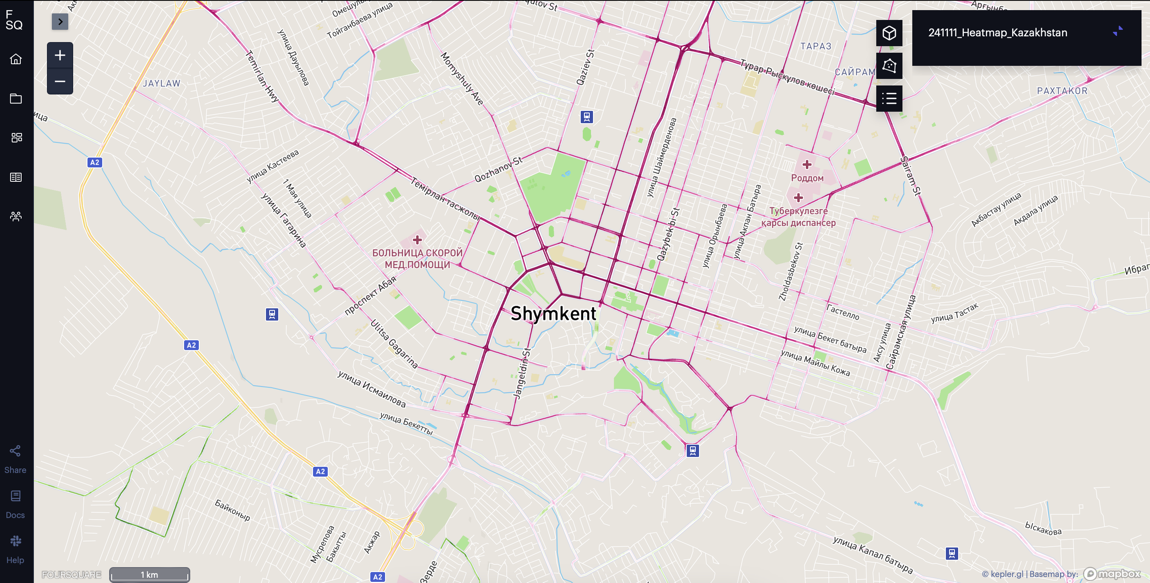Nowadays, in outdoor advertising market, measurements are an essential part of the process. To make placements more effective, it’s not enough to just assume the target audience of a product; understanding their behavior and movement patterns in the city is crucial. Let’s dive into the different methods of data collection.
The main data collection technologies
Today there are several main technological solutions to collect the data:
- Wi-Fi sniffers
- Bluetooth sniffers
- Cameras
- Geospatial data (traffic on road sections)
- Radio sensors
- Mobile operators

Wi-Fi sniffers can be installed in any location where people use mobile devices: on the streets, in shopping malls, at train stations, or in airports.

Bluetooth sniffers, unlike Wi-Fi sniffers, do not require a constant network connection, so they can detect devices even without internet access. These devices operate over shorter distances (up to 100 meters).

Modern cameras are equipped with video analytics and artificial intelligence (AI), allowing them to not only record video but also analyze and process it in real-time.
The analysis includes:
The analysis includes:
- Counting the number of people and vehicles;
- Analyzing audience characteristics (gender, age, behavior – such as attention to advertising screens);
- Determining movement routes;
- Advanced analysis (face recognition and other characteristics).

Mapping services analyze vast amounts of user migration data. This data is anonymized and processed to provide traffic maps that show street congestion, people and vehicle flow intensity, and can even make predictions. These services cover a large number of users, as most smartphone owners actively use navigation apps.

Radio sensors are mainly used in enclosed spaces (subways, shopping malls). Unlike sniffers, radio sensors can pick up signals even if the user’s Wi-Fi or Bluetooth is turned off. However, they have limited accuracy and depend on the presence of radio waves.

Mobile operators cover almost all smartphone users, providing large datasets for analysis. This is unlike sniffers, which rely on a user’s network settings. Mobile operators can also offer segmented data by geography and demographics, allowing for more targeted advertising in specific areas.
Let’s summarize and compare the advantages and disadvantages of these data collection methods:



Among the primary data collection methods, the future is in using mobile operator data in combination with AI and Big Data capabilities.
Example: The METER Platform
METER collects data about the migration of a specified audience both within and outside the city, using various data sources: mobile apps, mobile operators, geolocation, web analytics, and offline purchase data. This helps enrich the final results and ensure precise, transparent measurements.
The data workflow can be divided into several main stages:
Example: The METER Platform
METER collects data about the migration of a specified audience both within and outside the city, using various data sources: mobile apps, mobile operators, geolocation, web analytics, and offline purchase data. This helps enrich the final results and ensure precise, transparent measurements.
The data workflow can be divided into several main stages:
- Data Collection: The system collects and processes the so-called anonymized "digital footprint" of every city resident, tracking their movement and behavior patterns. Initial data collection includes satellite geolocation signals from devices, mobile operator data, visited websites and apps, as well as offline purchase and transaction data.
- Filtering and Merging: The resulting data may contain noise and inaccuracies due to signal variability, overlapping buildings and obstacles. METER processes all the information for duplicates and errors, and organizes and merges it using AI capabilities.
- Profiling: METER creates a social-demographic profile for each user in the system, linking it to characteristics such as interests, hobbies, and behavioral patterns.

With this approach and the ability to integrate data from multiple sources, METER provides its partners with the most comprehensive analytics available today. It tracks audience migration and behavior patterns, allowing for highly accurate predictions of the locations with the highest audience concentration.

What insights can METER data provide?
- Precise analysis of audience movement: determining routes, concentration areas, and peak activity zones.
- Optimization of outdoor advertising: calculating OTS (Opportunities to See), planning campaigns by time and high-traffic locations.
- Target audience research: analyzing age, gender, habits, and interests; creating heatmaps of audience concentration in any location; tracking behavioral patterns.
- Geomarketing: selecting optimal business or advertising locations.
- Real-time campaign monitoring: assessing effectiveness and making adjustments on the go.
- ROI evaluation for outdoor advertising: analyzing return on investment, deep analytics of placement results, and evaluating offline conversion.

METER regularly conducts monitoring of advertising structures, providing insights into the current state of the outdoor advertising market in any chosen region. The system allows for unique reports on requests, such as competitive market analysis, brand share, volume, and concentration of advertising placements, and much more.
For up-to-date outdoor advertising news, follow the Telegram channel "Behind the Scenes of Outdoor Advertising."
METER* - Audience measurement platform for outdoor advertising and geo-analytics.
For up-to-date outdoor advertising news, follow the Telegram channel "Behind the Scenes of Outdoor Advertising."
METER* - Audience measurement platform for outdoor advertising and geo-analytics.
